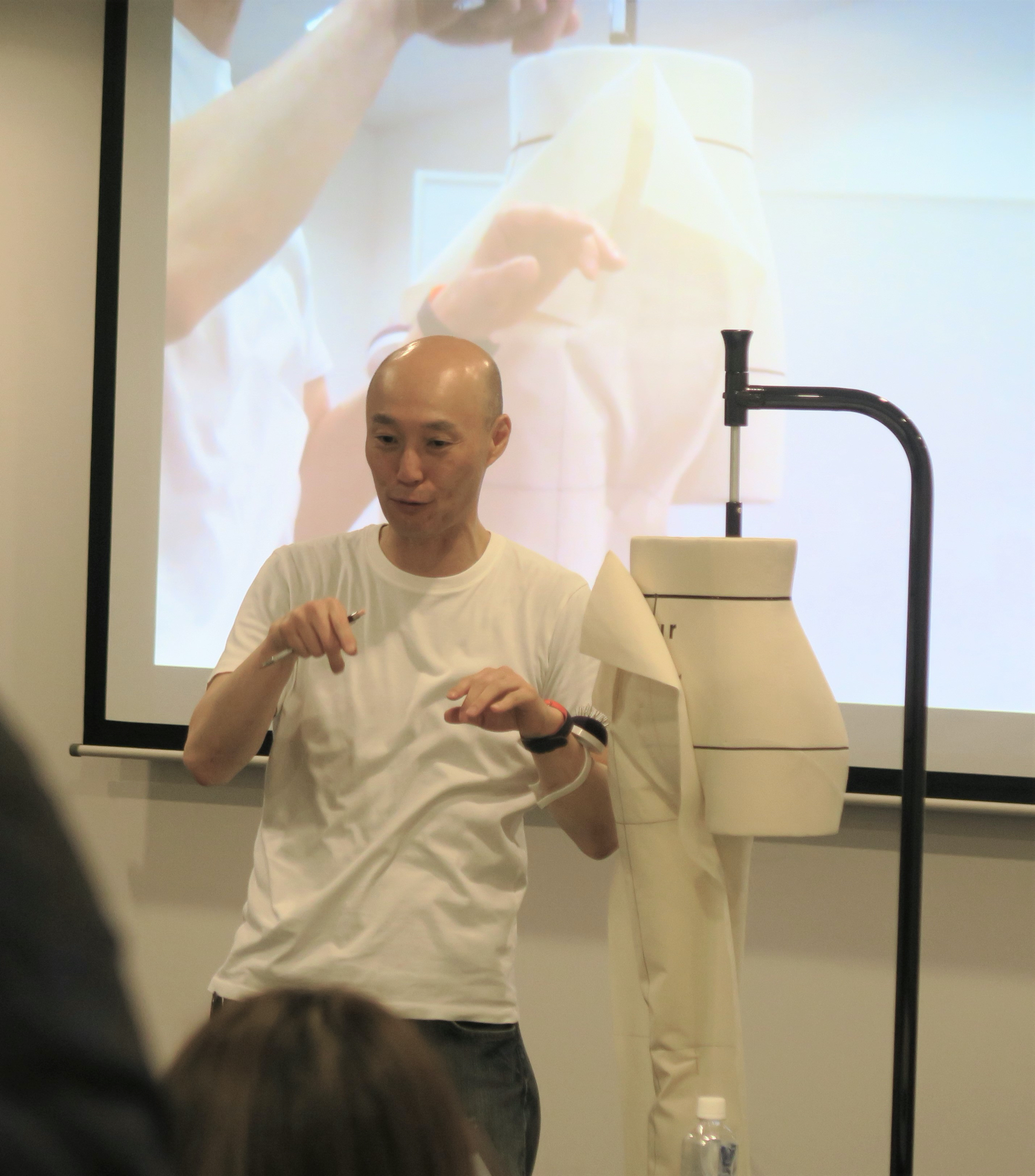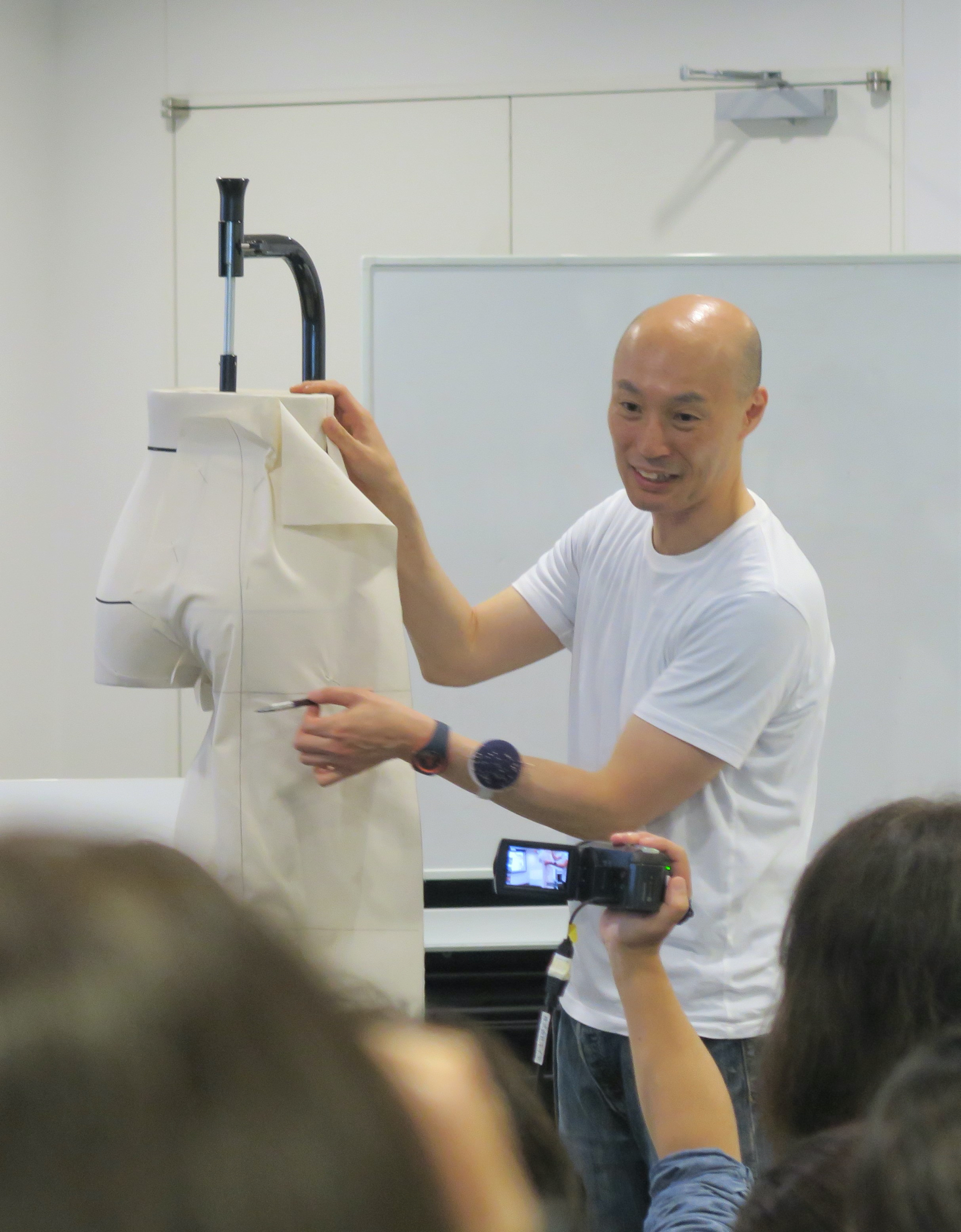How would you briefly describe your professional background?
I studied fashion design in Tokyo and then moved to Germany where I started working as a designer and pattern maker.Today I teach drapage as a professor at AMD in Berlin and at the Pforzheim University I am a professor for fashion design.
How did you come to specialize in the art of pattern making after studying fashion design?
My specialization is not limited to cuts, but also includes draping, and pattern construction as a design process, as well as the use of 3D software. I understand design as a "process of problem solving." When someone buys a design product, fashion products included, that purchase is based on the consumer's desire to invest in their own transformation. So the product represents a solution, a way out of dissatisfaction. For me, marketing, designing a store, editing, and filming drapage videos are all parts of a problem-solving process. I spend so much time on draping is because I find this method to be particularly effective in getting people to understand the importance of design.
You develop your patterns directly in the calico fabric, on the mannequin. What is the advantage of that method of draping as opposed to pattern construction on paper?
I think the most important thing about the design process is communication with the consumer. When you drape on a bust, you see the result immediately and realistically before your eyes. This method also encourages communication with others. The digitalization of our work has many advantages, but a major disadvantage is the disappearance of dialogue in the real workplace. When this communication is absent, design tends to become simplified and uniform. This is because digital communication and transformation of highly original ideas and complex sewing processes is very difficult. As a result, inexperienced designers and pattern makers then tend to use pre-made templates because it's convenient. I think designs mature through a lot of communication with different people. Dialogue with the maker, the user, the fabric itself. The extremely analog process of draping forces communication and thus encourages creativity.
Do you use German cutting systems like “Müller & Sohn”?
Not at the moment. But I know pattern cutting systems from Japan, Italy, France and Germany. It is important to know that such cutting systems were developed in the 1830s with the advent of the metric system in France, however, were not widely used on the market until the twentieth century which was not that long ago. Drapage has a much longer history. The systems are the result of the quantification of the cut papers taken by the Drapage. If you want to understand cuts more deeply, you have to study drapage.

Understanding a good pattern and proportion is very closely linked to the design of a piece. Do you see yourself more as a pattern maker or as a designer?
It must be clear that the criteria for comparing fashion design and patternmaking as good or bad will change with the demands of the times. Many designers and craftspeople misunderstand this. There is no constant standard for good or bad design. We are always dissatisfied with the products around us. That's because time passes. So, we need an eternal, ongoing design process to resolve that dissatisfaction. The distinction between design and patternmaking is nonsense. It's important that everyone understands design first. And we need to start learning the spirit and theory of the times. In the future, we won't need cutters who don't understand design. So, I see myself as a designer.
Do you also implement other designers' designs?
For the time being, I don't design for anyone or any company. I help the next generation of people understand design via teaching at schools and through seminars. Some will be happy to design a beautiful dress for one person. But that's not my job. I want to teach designers who understand many techniques for the fashion of the future, or fashion engineers who understand design.
Are there differences in pattern making in Japan and Germany?
The manufacturing methods of these two countries are very similar. It is important to value craftsmanship, and to pass it on to the next generation. However, there are similar problems when you prioritize technology. I feel that it is similar not only in fashion, but also in the world of politics and sports. Creating and adhering to rules and systems is a top priority, and fun often gets lost in the process.
The big difference we see in design is whether we make the "materials" ourselves or have them made. In Japan, beyond the field of fashion, the necessary materials are still produced domestically. Therefore, even young designers can develop ideas from the material stage and create very original products.
You have developed your own dressmaker's dummy. What makes it different from the usual models?
My tailor mannequin is more than just a dress form, it is a strong partner in the design work. She is not just a tool. You spend life with her eight hours a day for decades. You can talk to the tailor mannequin, introduce new ideas and improve product quality. Most dressmaker's dummies are sold only as tools. You can't communicate or bring out the true potential with a simple tool that the mind can't bond with. My tailor mannequin is as realistic as possible in its human silhouette and has the qualities you want in a working partner. It is of course made of sustainable materials, which is becoming increasingly important for the fashion designers of the future.
